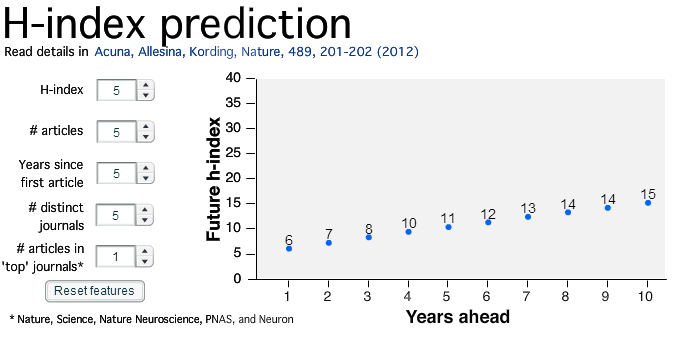|
Many young scientist are interested in knowing their progress in their careers. By use of statistical methods researchers made it possible to have an idea on the future success of the scientists. Research was based on 3085 neuroscientists. This study revealed that the future h-index or success in science can be predicted by a statistical method based on the h-index of the scientist and common CV features.
"The typical research CV contains information on the number of publications, those in high-profile journals, the h-index and collaborators. One can also infer interdisciplinary breadth, the length and quality of training, the amount of funding received and even the standing of the scientist's PhD adviser. Such factors are taken into account for hiring decisions, but how should they be weighted? Fortunately, obtaining data on the scientific activities of individual researchers has never been easier. Using all of these features, we can begin to probe the scientific enterprise statistically." Acuna, D. E., Allesina, S. & Kording, K. P. Future impact: Predicting scientific success. Nature 489, 201–202 (2012). The work was published in Nature and the data sources were Scopus and Academictree. To estimate your future success follow the link! It is also interesting to mention one of the articles cited in the above work, in the article a sentence highlights the importance of the h-index: "Based on typical h and m values found, I suggest (with large error bars) that for faculty at major research universities, h ≈ 12 might be a typical value for advancement to tenure (associate professor) and that h ≈ 18 might be a typical value for advancement to full professor. " Hirsch, J. E. An index to quantify an individual’s scientific research output. PNAS 102, 16569–16572 (2005). For more information on the statistical study follow the links below: http://tr.scribd.com/doc/109612801/Predicting-scientific-success http://klab.smpp.northwestern.edu/wiki/index.php5/Media
0 Comments
Leave a Reply. |
Archives
November 2017
Categories
All
|

 RSS Feed
RSS Feed

